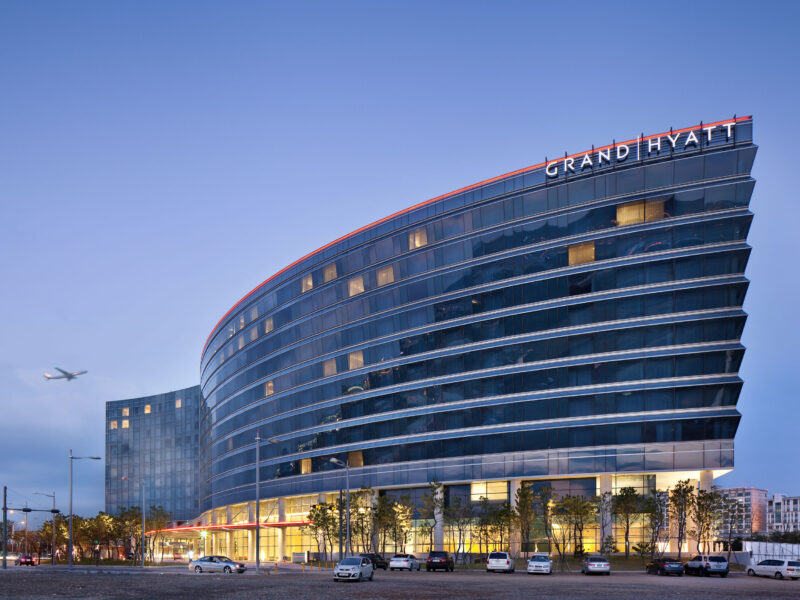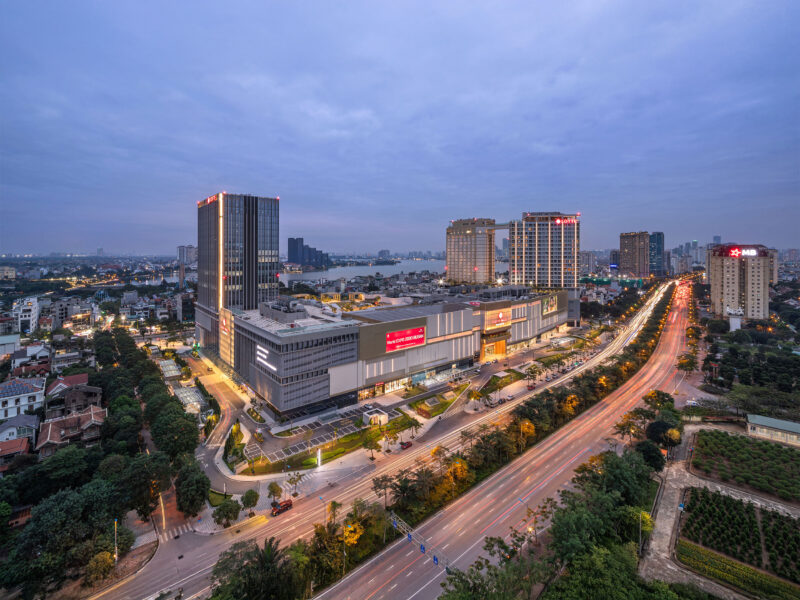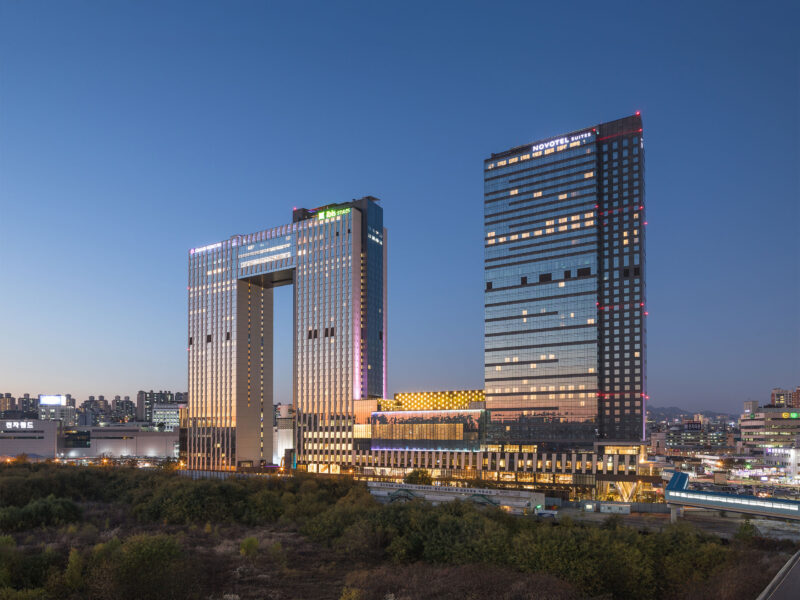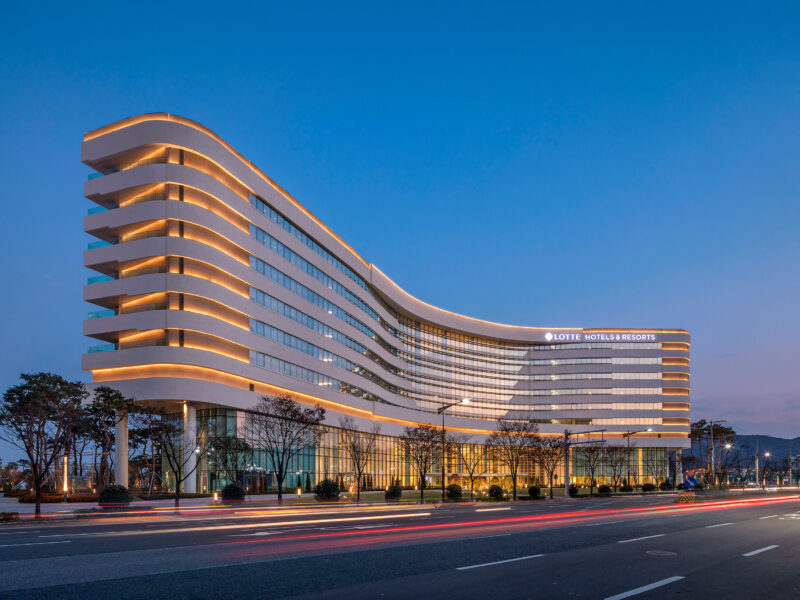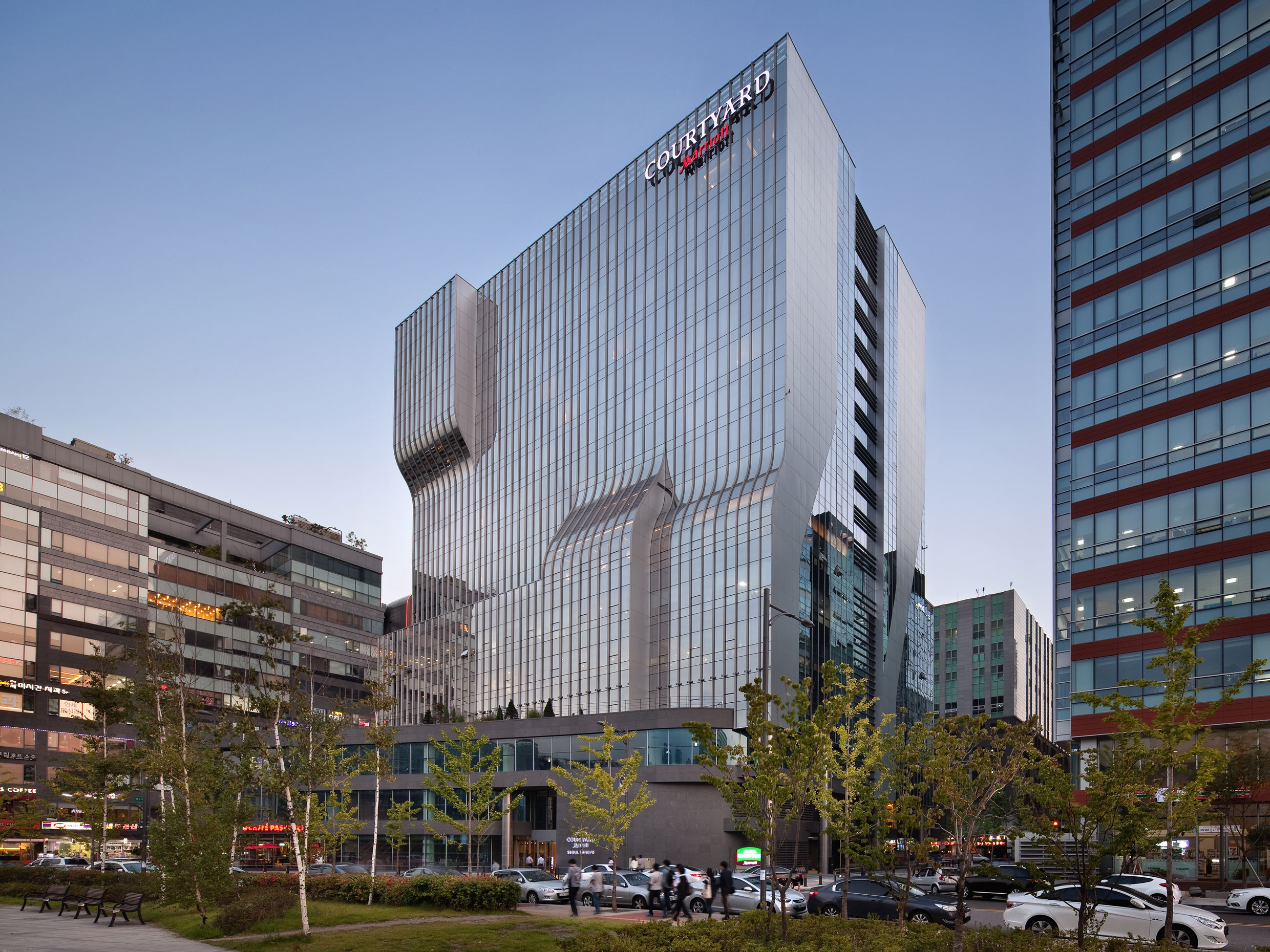
Business hotels are lodging facilities that fulfill the fundamental functions inherent to hotels. They gain reliable competitiveness only when they offer easy and comfortable accessibility and circulation systems, appropriate placement of convenience facility and room layouts, and a service level consistent with the hotel brand. Although Pangyo is located near downtown Seoul, it has relatively limited lodging supply, offering significant potential for business hotels to establish themselves and grow. From the design competition participation in spring 2011 to the project completion in 2014, Pangyo rapidly developed as a business district. Courtyard by Marriott Seoul Pangyo (hereafter, the Pangyo hotel) is situated at the edge of blocks filled with commercial facilities along the street and vertically rising office buildings, positioned at the confluence of a stream and green axis. Under the same legal restrictions as surrounding developments, it has the opportunity to adopt a different architectural attitude and respond to its environment. Although the hotel is part of a mixed-use complex, its primary functions and values focus on achieving functional completeness based on the hotel’s own competitiveness.
The core design idea was to create a unified volume by integrating a low-rise base and upper floors into a single form, augmented by contrasting elements to produce a new urban expression with natural symbolism and distinctiveness. Mixed-use complexes commonly face segmented volumes due to functional and regulatory requirements, making it difficult to form a cohesive image. However, the Pangyo hotel proposed a continuous form by minimizing the boundary between the lower base volume and the upper figural tower, creating an image that grows gradually from the ground up. Vertical patterns on the façade extend across the base, connecting the volumes, and rise as flowing curved forms like tree branches, bending inward and outward naturally. The rhythmic vertical and curved elements resemble a colonnade, and the upper façade, extending upward against gravity, responds to the flow of the adjacent stream, settling with symbolism and recognizability in clear contrast to the artificial surroundings.



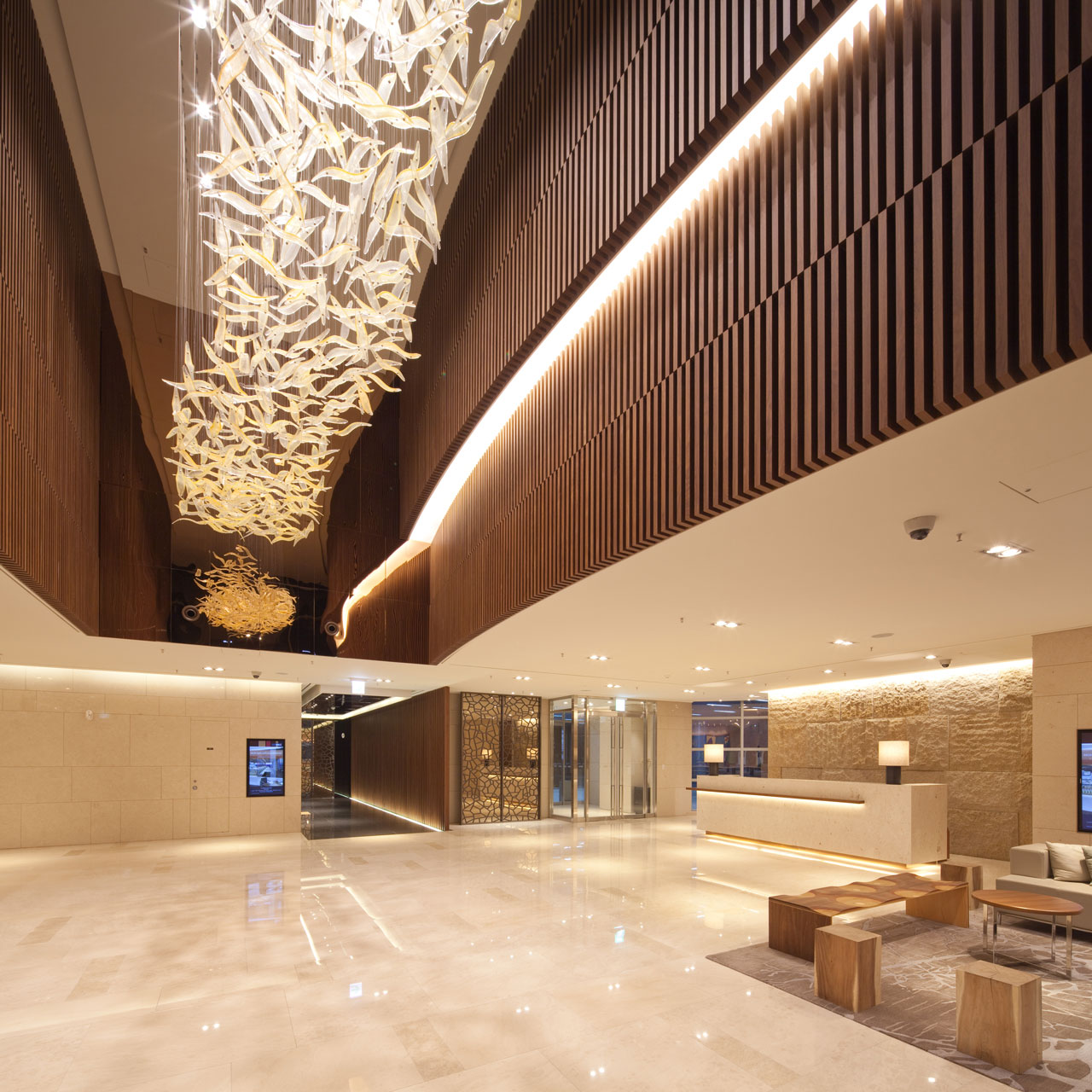
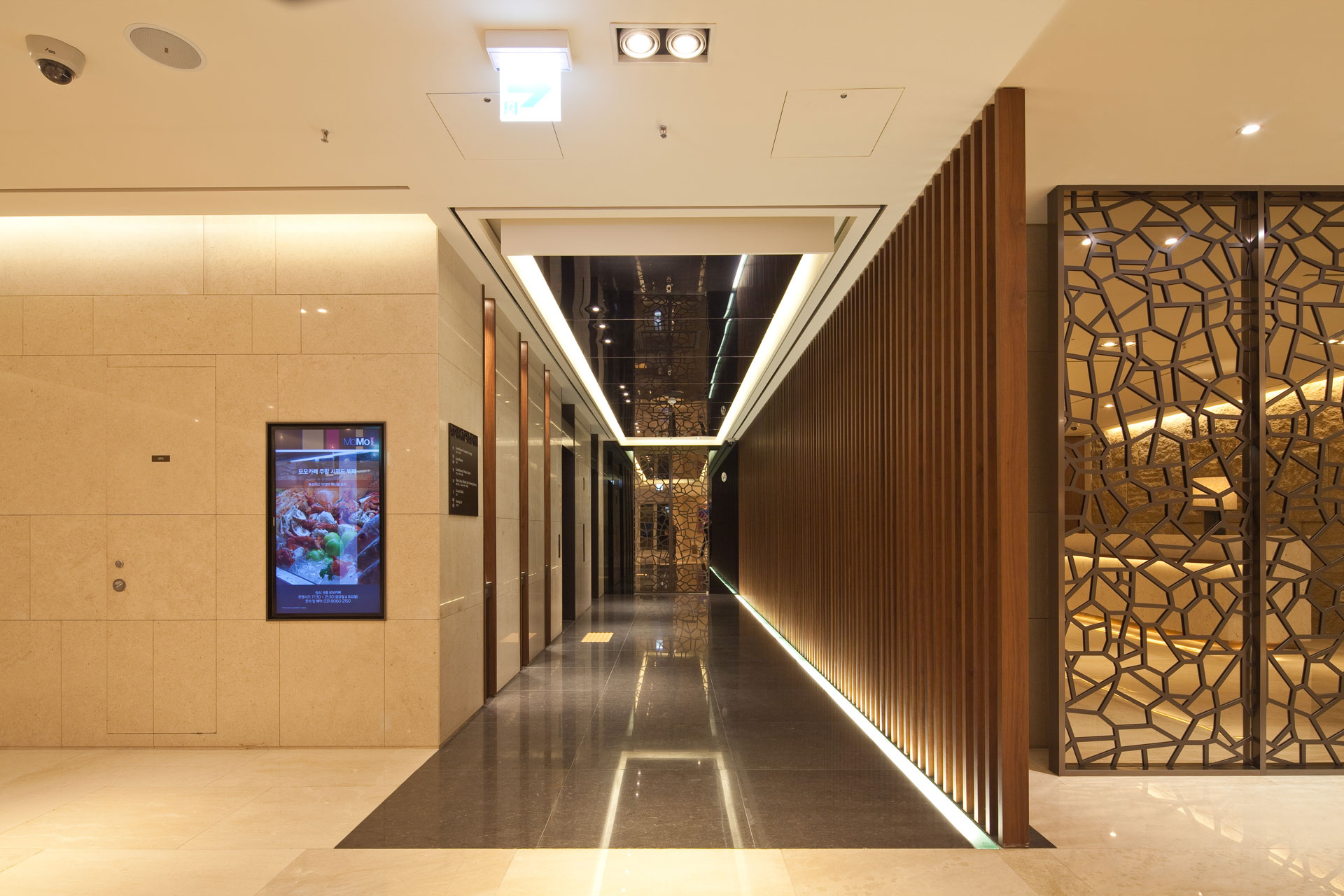

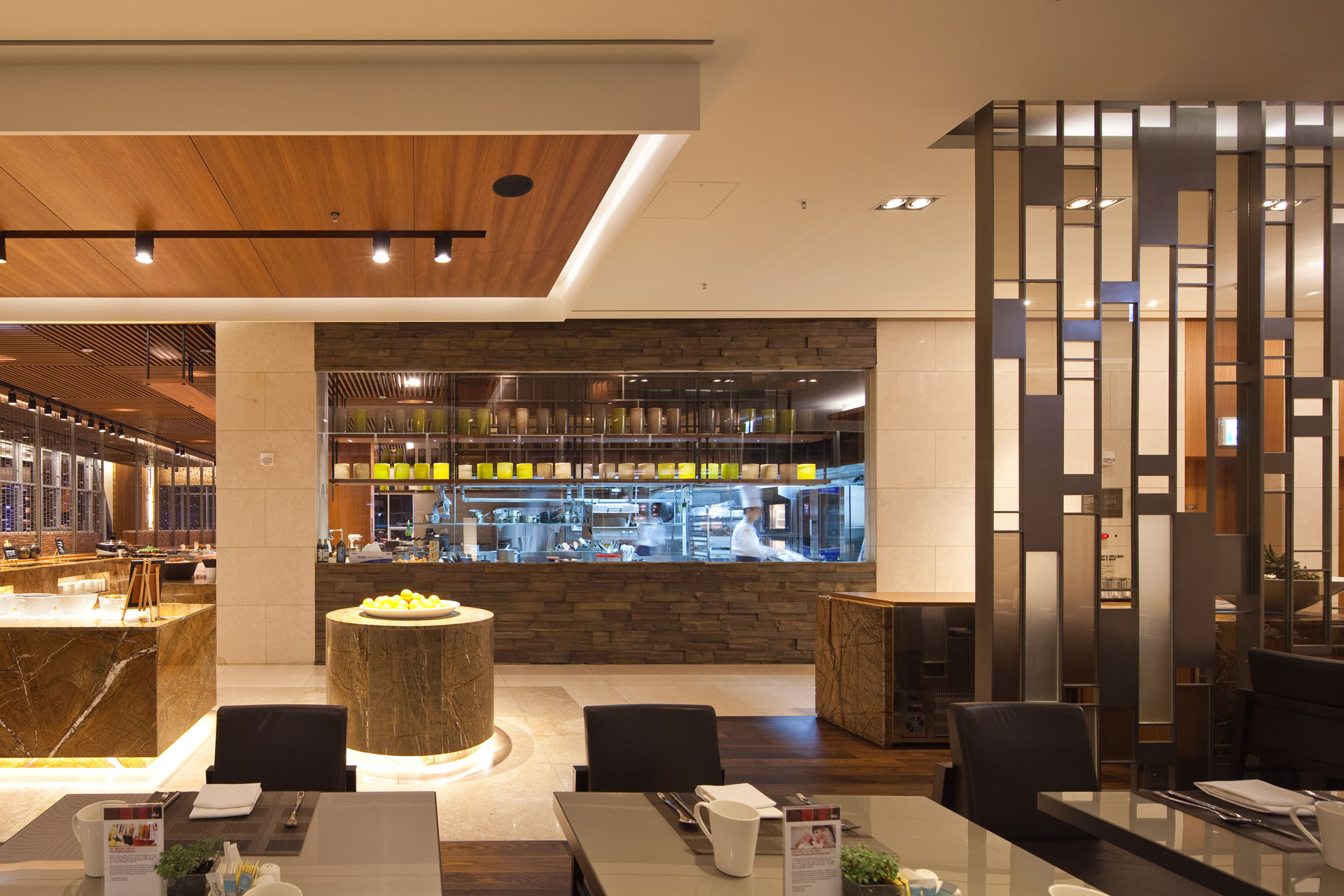
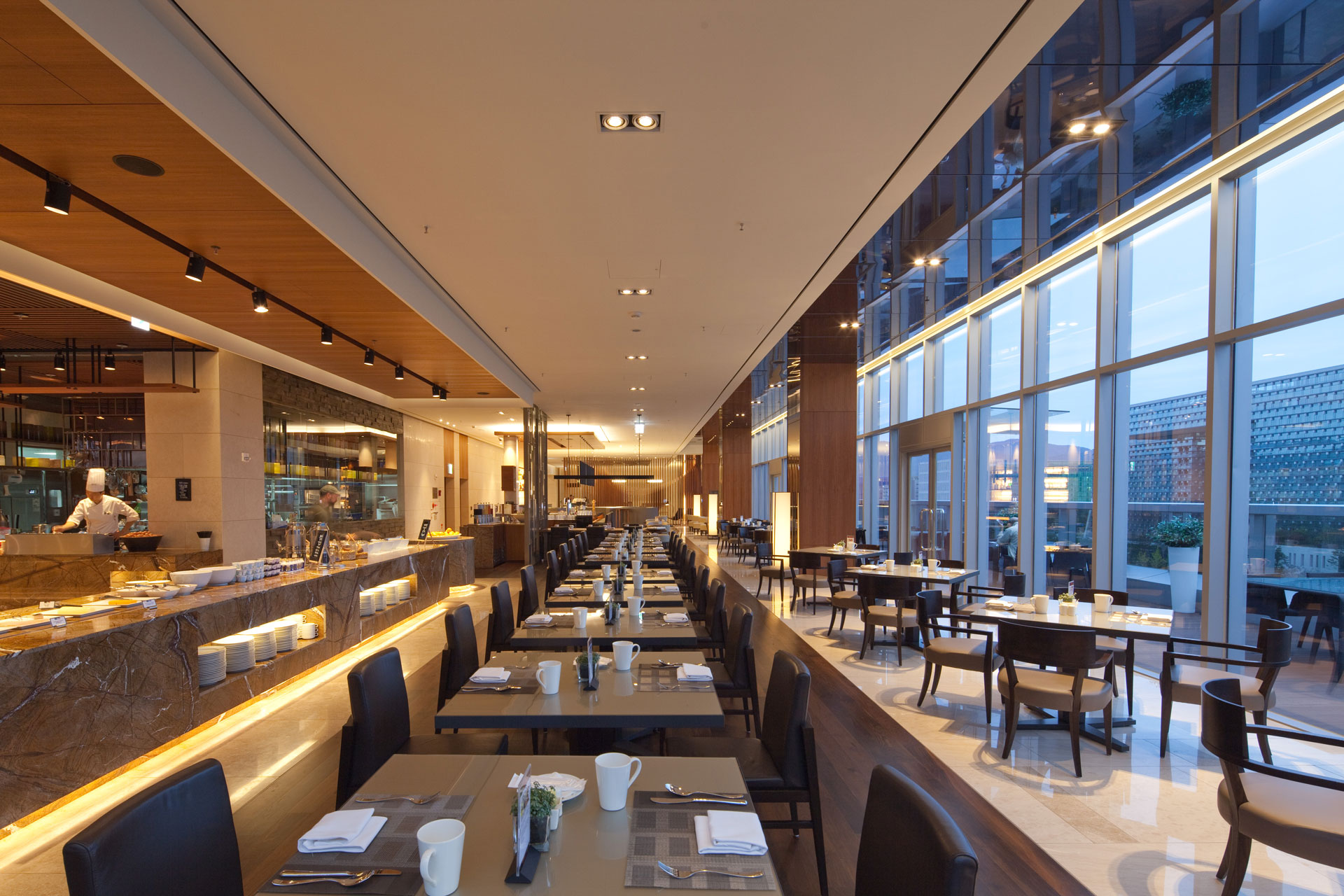

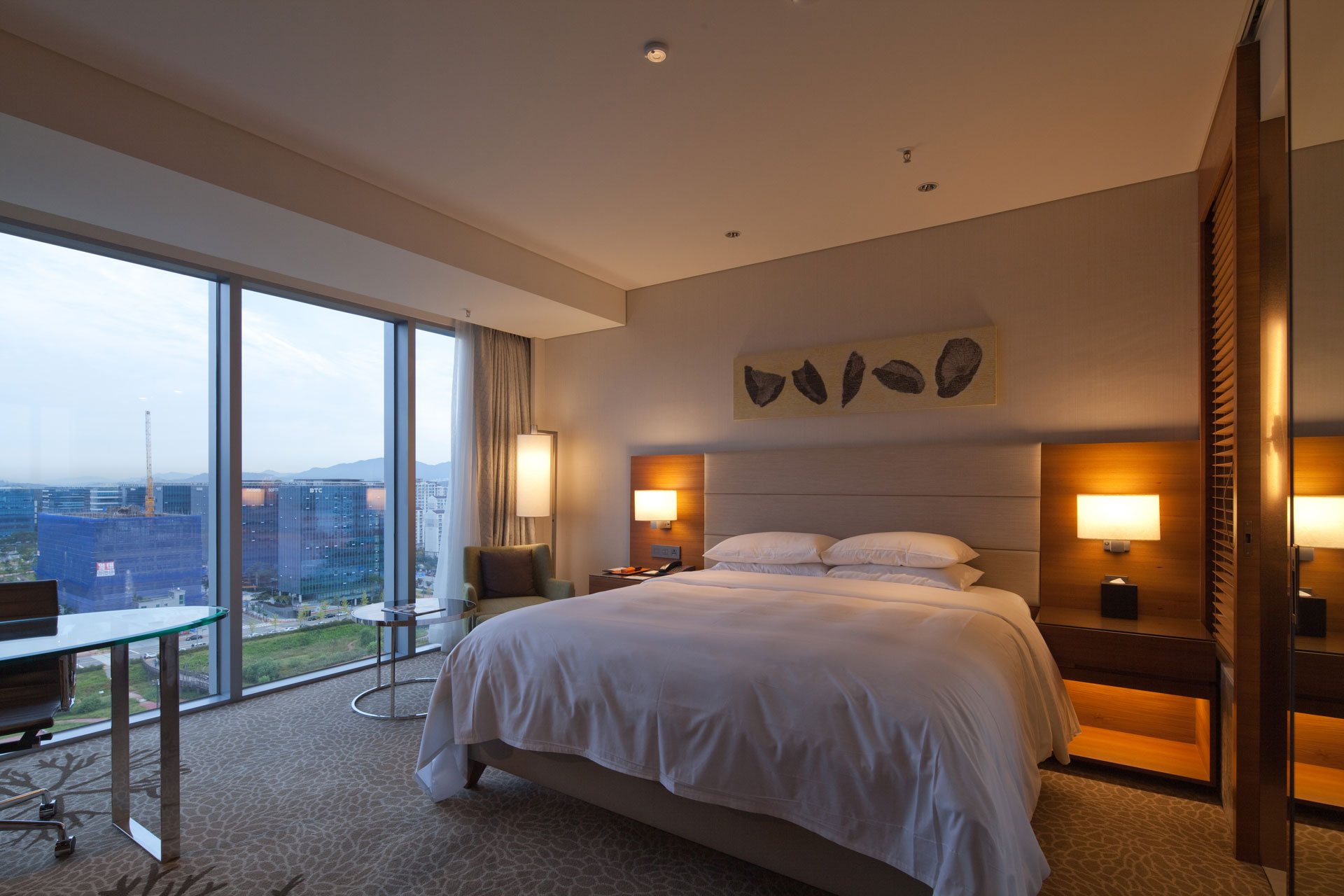
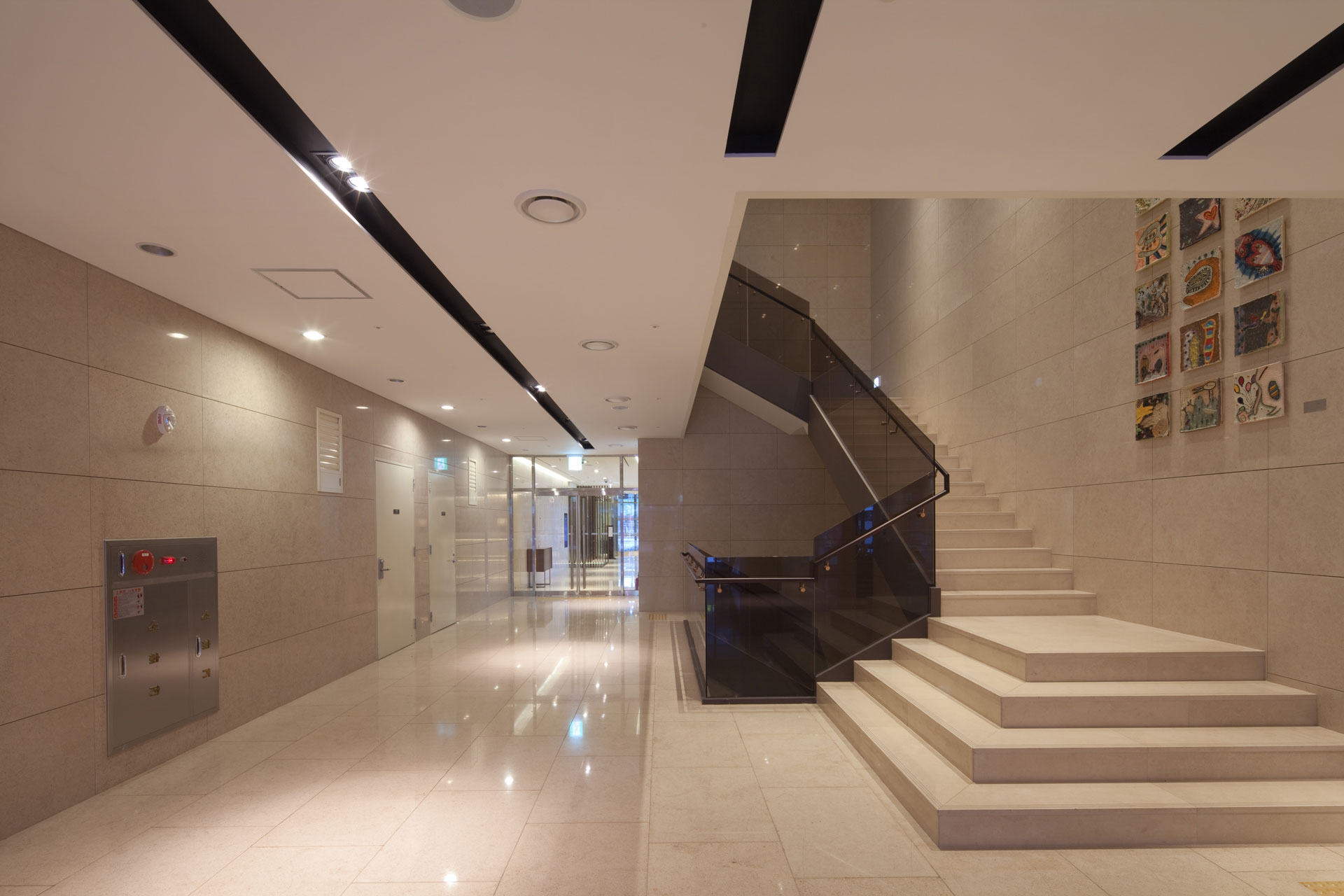
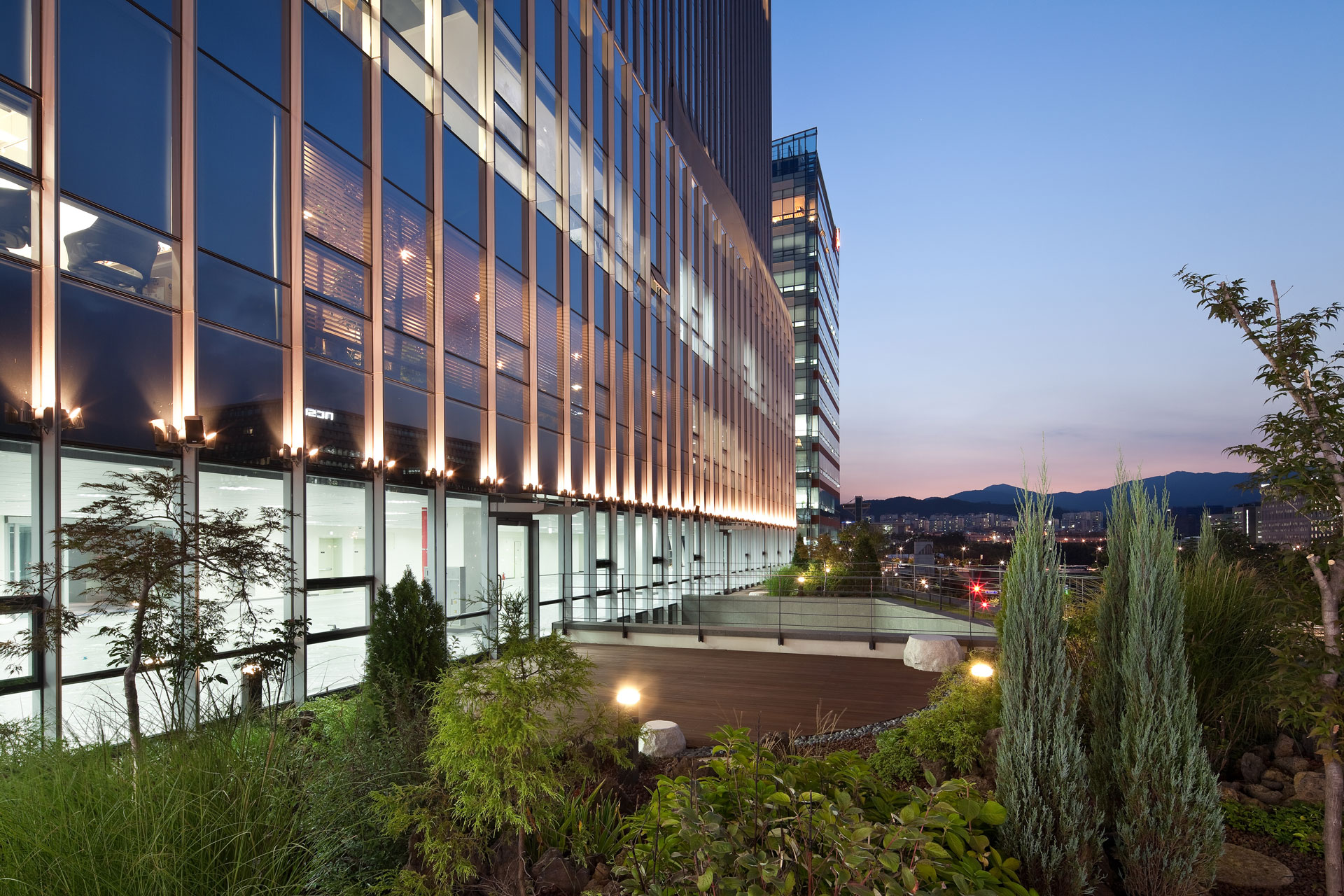
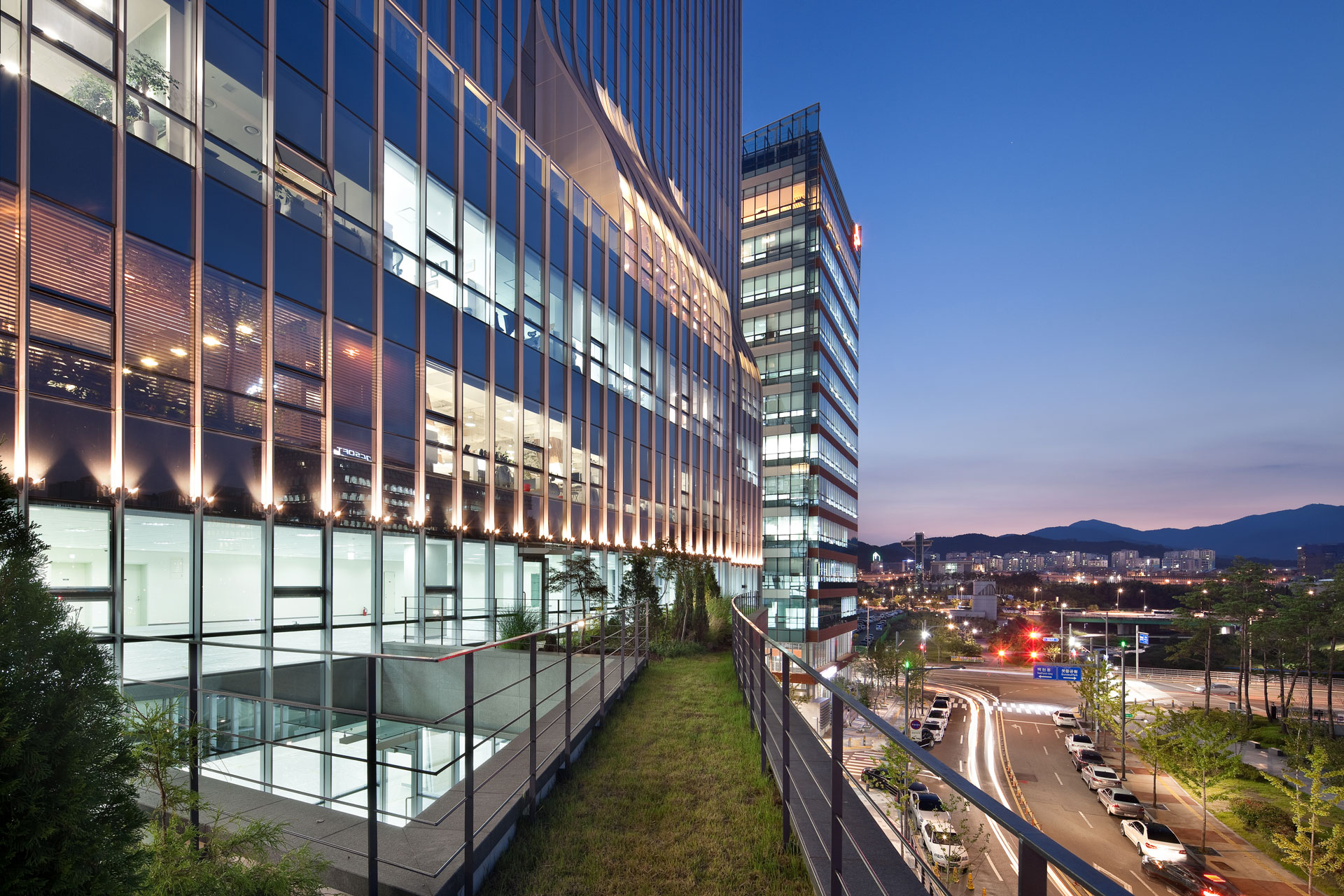

-
Status
Completed
-
Client
Mirae Asset Maps Asset Management Co., Ltd.
-
Program
Hospitality, Mixed Use
-
Design Year
2011
-
Completion Year
2014
-
Location
Seongnam-si, Gyeonggi-do
-
Site area
3,310.00m2
-
Gross Floor Area
39,878.02m2
-
Building Area
2,308.89m2
-
Number of Levels
B6, 16F
-
Design
Business hotels are lodging facilities that fulfill the fundamental functions inherent to hotels. They gain reliable competitiveness only when they offer easy and comfortable accessibility and circulation systems, appropriate placement of convenience facility and room layouts, and a service level consistent with the hotel brand. Although Pangyo is located near downtown Seoul, it has relatively limited lodging supply, offering significant potential for business hotels to establish themselves and grow. From the design competition participation in spring 2011 to the project completion in 2014, Pangyo rapidly developed as a business district. Courtyard by Marriott Seoul Pangyo (hereafter, the Pangyo hotel) is situated at the edge of blocks filled with commercial facilities along the street and vertically rising office buildings, positioned at the confluence of a stream and green axis. Under the same legal restrictions as surrounding developments, it has the opportunity to adopt a different architectural attitude and respond to its environment. Although the hotel is part of a mixed-use complex, its primary functions and values focus on achieving functional completeness based on the hotel’s own competitiveness.
The core design idea was to create a unified volume by integrating a low-rise base and upper floors into a single form, augmented by contrasting elements to produce a new urban expression with natural symbolism and distinctiveness. Mixed-use complexes commonly face segmented volumes due to functional and regulatory requirements, making it difficult to form a cohesive image. However, the Pangyo hotel proposed a continuous form by minimizing the boundary between the lower base volume and the upper figural tower, creating an image that grows gradually from the ground up. Vertical patterns on the façade extend across the base, connecting the volumes, and rise as flowing curved forms like tree branches, bending inward and outward naturally. The rhythmic vertical and curved elements resemble a colonnade, and the upper façade, extending upward against gravity, responds to the flow of the adjacent stream, settling with symbolism and recognizability in clear contrast to the artificial surroundings.
















